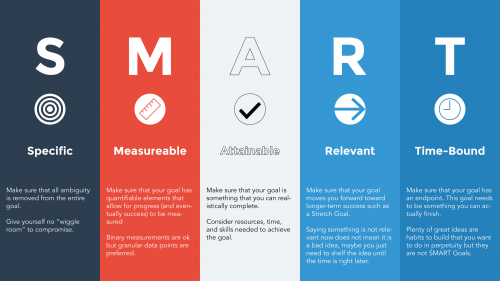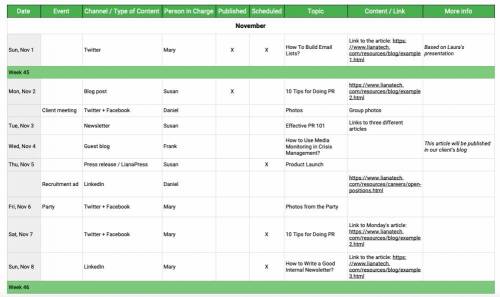In today’s highly competitive market, a small business must stand out from the competition to attract qualified leads and generate revenue. As a result, one of the most impactful ways to achieve this is an effective content marketing strategy.
There are nearly 2 billion websites in the world vying for the attention of online shoppers. Consequently, small businesses need to gain visibility to drive traffic to their site while providing the best solutions to the unique problems of each prospect.
Today’s discerning consumers are motivated less by competitive prices and more by whether a company’s website provides a positive user experience. In other words, content marketing can help you build a following and increase conversion rates for ongoing success.
Keep reading to gain a better understanding of the importance of content marketing and learn how to develop an effective strategy for your marketing efforts.
Quick Takeaways
- Content marketing helps set you apart from the competition. As a result, it increases visibility. Likewise, it drives traffic to your site for higher conversion rates and revenue generation.
- Setting SMART goals and identifying your online shoppers help shape your content marketing strategy for optimal results.
- Mapping out content and creating a distribution schedule provides parameters against which to measure the success of your content marketing efforts.
Why is Content Marketing Important?
Content marketing has a far-reaching impact. Today’s consumers want to receive relevant, authoritative information. Therefore, the more quality content you create that resonates with your audience, the more trust, and loyalty you build among your followers.
This increases the likelihood that they’ll share your information with their own contacts and broaden your reach exponentially. In the same vein, quality content enables you to:
- Engage with your audience. Storytelling helps you connect and build lasting relationships with your readers. This is important because existing customers make 65% of a company’s purchases.
- Build your reputation. When you consistently deliver quality content, people will rely on you as a trusted source and industry leader.
- Boost your ROI. The conversion rates for content marketing are six times higher than other marketing strategies.
- Enhance digital marketing channels. Social media, email, video, and more benefit from quality content.
When you craft tailored messages that address particular issues, you deliver a positive experience to your audience. Consequently, search engines identify you as a valuable resource for their users and reward you with higher ranking placement.
This is crucial since 75% of online users don’t look past the first page of Google search results. The following video provides more detail about how to write for SEO to increase your visibility and drive more quality traffic to your site:
Content marketing is key to setting your small business apart from the competition, getting more leads, closing sales, and generating revenue.
5 Steps to Building an Effective Content Marketing Strategy
To benefit from content marketing, every small business must first develop a roadmap for creating and distributing quality content. Here are five steps to building an effective content marketing strategy.
Step 1: Set SMART Goals
Before you can plan your content, you must first know what objectives you’re trying to reach. Whether you want to drive more traffic to your site or increase audience engagement, set SMART goals that are:
- Specific: Whether it’s a number to reach or a deadline to meet, specificity can help provide direction for your campaign.
- Measurable: Milestones help you gauge the impact of your strategy.
- Achievable: Goals should be realistic and attainable. A series of small successes can help propel you forward.
- Relevant: Short-term plans should align with your long-term mission.
- Timely: Set an end date to motivate you toward success.
Setting goals will help you deliver the right message to the right audience at the right time.

Step 2: Identify Your Audience
For the greatest impact, you must have a strong understanding of who your online audience is. As a result, combining basic demographics like age and gender with insight into which channels they frequent (and how often) can help you build the framework for an effective content marketing strategy.
Analyze your data to identify audience personas. Likewise, learn more by monitoring their online activity to see what kind of feedback they give and what candid conversations they have about you and your competitors.
Use that information to plan content that specifically addresses concerns and frustrations and proves why your solutions are superior. In short, by understanding what your audience wants, you can create custom content that resonates and compels them to shop with your small business.
Step 3: Map Out Your Content
With your goals set and your target audience identified, you can begin to plan your content. Choose relevant topics that are meaningful to your readers. Content marketing encompasses a wide variety of materials, including:
- Blog Articles: Expert content includes high-performing keywords and links to reputable sources that help deliver a positive user experience and boost SEO.
- Videos: People can digest information while performing other tasks.
- White Papers: Research findings help establish you as a leader in your field while delivering essential information.
- Social Media Posts: Engage your audience and learn more about their preferences, pain points, and opportunities to provide solutions.
Based on audience behavior and preferences, choose the type of content that makes the most sense for your goals. Further, as you develop your messaging, be sure to keep the customer in mind. Address their specific needs and build trust with valuable information. After all, trust is a top priority for 53% of shoppers.
Step 4: Schedule Your Distribution
Knowing your audience and the type of content you plan to post will help you set a distribution schedule. You’ll know which channels you should use to reach your readers and when the best time is to post.
If your customers respond well to images, you know to focus on an Instagram campaign. For people who prefer email, you’ll have a better open rate with content sent in the mornings. Use all this insight to create a content schedule that helps you know what topics will be covered and through which channels you should syndicate it.
In addition to keeping you focused on your goals, setting an agenda helps you assign work to team members or outsource the work to a professional writing service. With the content subject matter planned out, you can find writers specializing in those topics to create expert messaging that resonates, brings value, and earns customer loyalty.
Creating a distribution schedule ensures organization, helps you create timely messages for greater impact, and sets parameters against which you can measure success.

5. Track Your Progress
Metrics are essential to determine whether your content marketing strategy is truly successful. Measure which channels are yielding positive results and identify areas that need adjustment. Engagement, open rates, and bounce rates can tell you things like:
- which avenues aren’t a good fit for your audience;
- what topics aren’t generating interest;
- time of day or day of the week that content distribution gets the best results; and
- whether you’ve accurately identified your audience and their needs.
In conclusion, there are lots of factors involved in a successful content marketing strategy. You can pinpoint what adaptations need to be made to achieve the best possible outcome by measuring progress.

